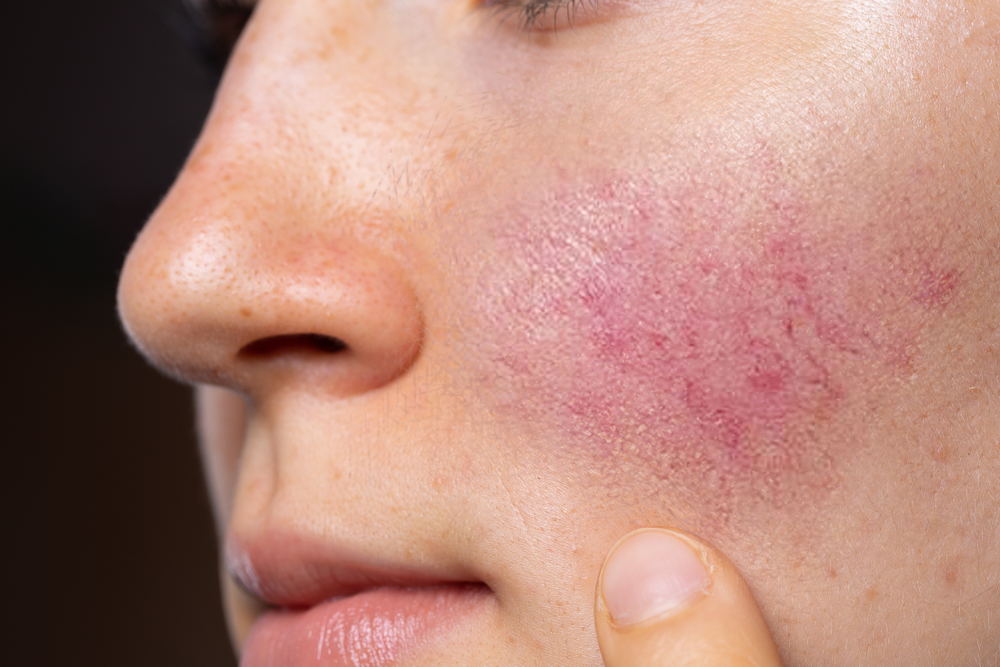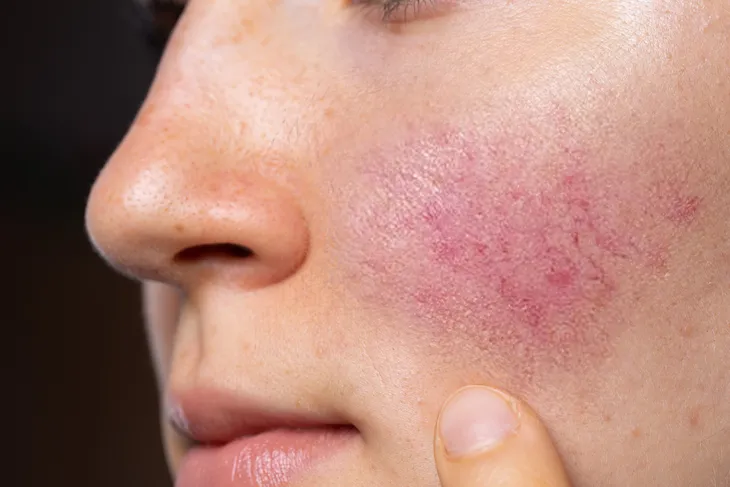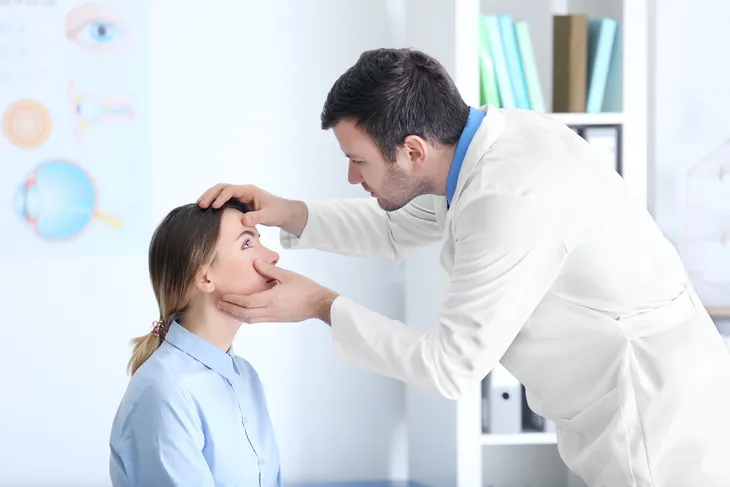The National Rosacea Society says approximately 16 million people across the U.S. (that’s about 1 in 20) suffer from rosacea, a chronic, inflammatory skin condition that manifests most commonly as skin sensitivity, associated flushing, and inflammatory bumps.
Rosacea is often misdiagnosed as eczema and unfortunately, the longer it’s undiagnosed and untreated; the worse it can become. That’s why it’s vital to recognize rosacea and its seven most telltale symptoms…
1. Tiny Facial Bumps
Most rosacea patients develop inflammatory bumps and pustules often on central face: nose, cheeks, and chin. Many doctors can mistake this pattern of bumps as general acne due to the fact that the bumps are often pus-filled (like whiteheads). However, rosacea is very different pathogenically from acne, although anti-inflammatory treatments often prescribed by the dermatologist can be similar in nature.
2. Exaggerated Facial Blood Vessels
One of the most identifying characteristics of rosacea is the persistent redness that’s often caused by dilated blood vessels. These tend to become exaggerated and visible in the center portion of the face—including along the bridge of the nose and across the cheeks.
3. Facial Flushing
The most common and telltale sign of rosacea is the deep blush or flush caused by the condition in its earliest stages. Periods of flushing will come and go, often accompanied by a very hot or feverish feeling across the area of skin it affects. Common triggers includes sun, heat, spicy food, alcohol, caffeine, and wine.
4. Persistent Red Skin
For many victims of this chronic skin condition, rosacea flushing can oftentimes be accompanied with lingering and persistent facial redness. It’s often mistaken for a deep blush or sunburn, but it’s caused by the dilation of a grouping of blood vessels under the skin, particularly in the center of the face.
5. Engorged Nose
Far more common to male sufferers than it is to female sufferers, rosacea can cause the skin on and around the nose, cheese, and nose to become thick, red, and bulbous. This is similar to a condition called rhinophyma, which is the ruddy effects often thought common to binge drinkers.
6. Sensitive Skin
Many rosacea patients will complain of burning sensation on the face. This sensitivity can occur with or without flushing, but often more pronounced when skin is red. Individuals will also have intolerance to many skincare products and complain that common ingredients will cause more sensitivity.
7. Chronic Eye Problems
About 50-percent of those who suffer from rosacea also suffer from some type of eye issues. These issues range from a mixture of dry eyes to swollen, crusty eyelids, as well as irritated and tender eyelids to eyeball redness (that’s often mistaken as allergy symptoms).










